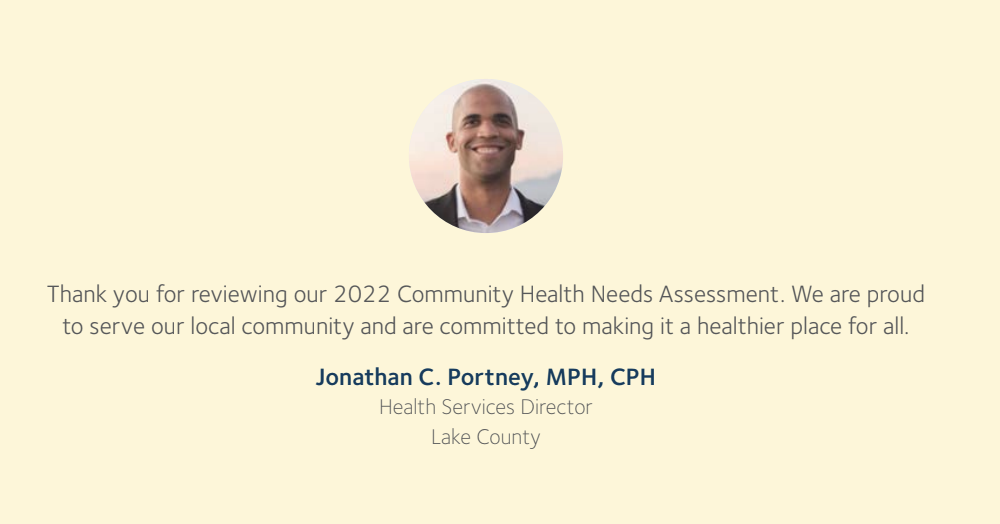Community Health Needs Assessment (CHNA) Link
Non-profit health systems, community-based organizations and public health agencies across the country
all share a similar calling: to provide public service to help improve their community members’ lives. One
area of public service where these entities share responsibility is ensuring all community members have the
opportunity to live a healthy life.
Executive Summary:
The Community Health Needs Assessment (CHNA) is one way public service agencies support the health of
their communities. These assessments are required of non-profit hospitals and public health departments
every three and five years, respectively, to understand the health needs of the communities they serve. The
purpose of this assessment is to engage the communities in identifying community health needs, and to align
resources across the community benefit functions of a non-profit hospital, strategies of public health, and
services of community-based organizations to drive towards improved health for all.
For 2022, the collaborative between Hope Rising, Adventist Health Clear Lake, Lake County Public Health and
Sutter Lakeside Hospital took this requirement one step further with the vision of designing a story-centric
and people-centric CHNA. We envisioned a concise report that the entire community could contribute to
and access, regardless of public health context or reading ability. This process involved input from community
focus groups and key informant interviews representing the broad interests of the community served by
hospitals and collaborative organizations. In addition, input was gathered from local public health officials,
community-based organizations, medical providers, students, parents, and members of selected underserved,
low-income and minority populations. We intentionally prioritized understanding the social and health needs
of uninsured or underinsured, low-income and minority persons in the community (see description of Focus
Group participants, Section III.B).
To conduct this assessment, we used secondary and primary data from focus groups and key informant
interviews conducted between October 2021 – January 2022. A local Steering Committee (see Section I.E)
reviewed data and prioritized community health needs over the course of three meetings (data collection
planning, data review and needs prioritization) taking place between October 2021 – March 2022. This
group determined the following final community health priority areas:
Access to Care
Health Risk Behaviors
Mental Health
